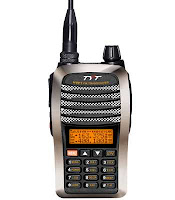
In the latest series of customer disinformation, one vendor is telling prospective fire department purchasers of 2-way radios using FEMA grant money that they can purchase ordinary analog narrow band radios on the basis that they meet Phase 1 P25 requirements. This guy is the hands down winner of our second Doofus Award for March. Either he is terribly misinformed, or purposefully misstating facts. Other Doofus Award winners can be found at http://falconinfo.blogspot.com/2010/03/doofus-of-day-awards.html.
The very term P25 means DIGITAL! For a radio to be P25 compliant, it must be CAI (Common Air Interface) tested and certified. The fact that a radio has 12.5 kHz channel spacing (narrow band) capability does NOT make it P25. A basic P25 CAI compliant radio must be capable of operating at 25 kHz or 12.5 kHz in an analog AND digital mode.
The term P25 is used to describe the APCO (Association of Public Safety Communications Officials) specified standard for DIGITAL voice modulation. This standard specifies the type of digital signals transmitted by COMPLIANT radios. One radio using P25 CAI should be able to communicate with any other P25 CAI compliant radio, regardless of manufacturer and model. In plain language a Motorola P25 CAI compliant radio will talk to a BK/Relm, ICOM, or a Midland IN A DIGITAL OPERATING MODE!
P25 CAI is a digital voice (modulation) type and therefore can be used on conventional channel radio system or in a trunking radio system. System type is not dependent on the use of P25 CAI except in the case of a Project 25 Trunking Radio System; in that specific case only P25 CAI modulation is used (no analog allowed).
Any purchaser of communications equipment using 2009 FEMA Fire Grant funding should purchase only P25 compliant equipment to comply with published interoperability standards. P25 trunking capability is not required under the FEMA guidelines but the purchase of a radio with this capability or one capable of being upgraded to this capability would normally be recommended. The standard used to determine grant compliance is called SAFECOM. The standard is readily available for any who will take the time to review it on the web. If you would like a simple one page overview of SAFECOM standards for communications purchases using federal grant money, please visit www.info4u.us/SAFECOM-2010.pdf for the real facts!
For those interested in additional information on P25, just click here. Be very careful who you take advise from. If in doubt, call your FEMA grant representative. It could save you a lot of problems down the road!








